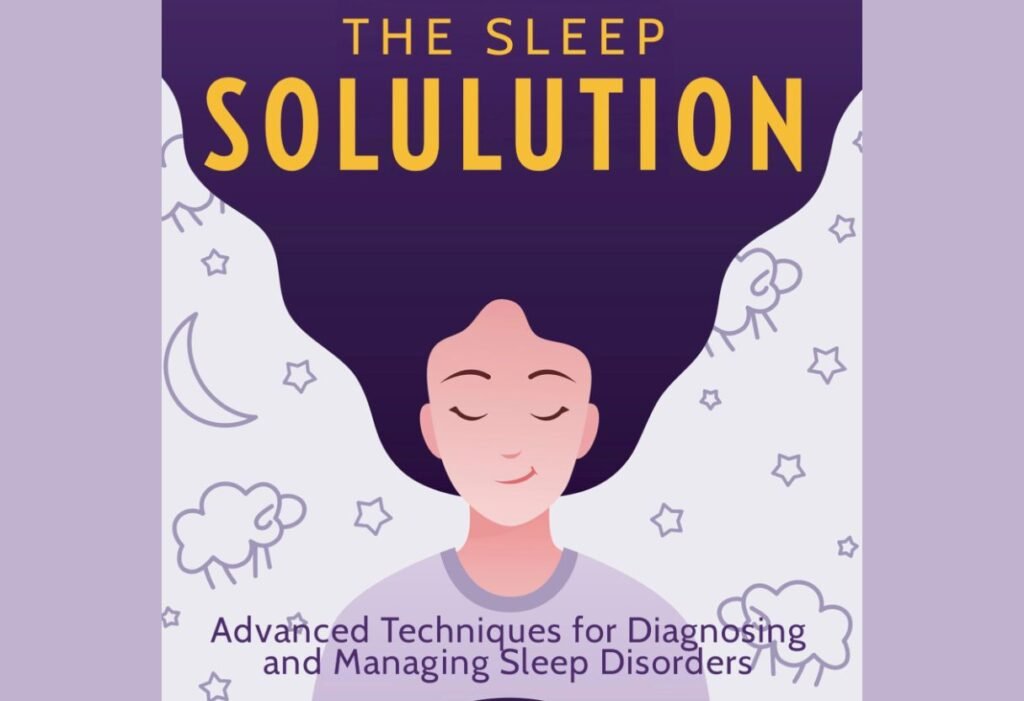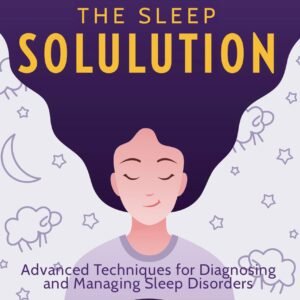Is a low salt diet dangerous?
Is a low salt diet dangerous?
Many health experts are now questioning the traditional stance on salt restriction, and you might be surprised to learn that following a very low salt diet could potentially harm your health. Your body needs sodium for vital functions like nerve transmission and fluid balance, but finding the right balance is key. While excessive salt intake remains a significant health concern, recent research suggests that consuming too little salt might be equally problematic. As you navigate dietary choices, understanding the complex relationship between salt intake and health becomes more relevant than ever, especially since recommendations can vary based on your individual health profile.
Key Takeaways:
- Most populations consume almost twice the recommended salt intake, with the global average reaching 10.8g daily versus the WHO’s recommendation of 5g
- Only 25% of daily salt intake comes from personal seasoning – the majority is hidden in processed foods like bread, sauces, and cereals.
- Research indicates excessive salt intake increases cardiovascular disease risk by 17% and stroke risk by 23% per additional 5g consumed daily.
- Salt sensitivity varies among individuals based on factors like ethnicity, age, body mass index, and family history of hypertension.
- Some recent studies suggest moderate sodium intake (3-6g daily) may be optimal for heart health, challenging traditional low-salt recommendations.
The Double-Edged Sword of Salt
The Essential Role of Sodium in Human Health
Your body requires sodium to maintain critical biological functions. This mineral helps regulate fluid balance, supports nerve signal transmission, and enables proper muscle function. Sodium also plays a vital role in maintaining blood pressure, absorbing nutrients in the intestines, and facilitating communication between the brain and the rest of the body.
Without adequate sodium, you could experience symptoms like headaches, fatigue, muscle weakness, and in severe cases, seizures or coma. Your body carefully regulates sodium levels through complex mechanisms involving your kidneys, which filter excess sodium while retaining what’s needed for crucial functions.
Health Risks Associated with High Sodium Intake
Excessive sodium consumption forces your body to retain more water to maintain the proper sodium-to-water ratio in your blood. This increased fluid retention raises blood volume, making your heart work harder and increasing pressure in your blood vessels. Over time, this elevated pressure can damage your blood vessels, heart, kidneys, and brain.
High sodium intake has been linked to a range of health conditions beyond hypertension. Research shows that excessive salt consumption can increase your risk of stomach cancer, osteoporosis, and kidney disease. Studies have found that reducing sodium intake by just 1,000mg per day could prevent up to 92,000 deaths and save up to $24 billion in healthcare costs annually in the United States alone.
The impact of high sodium intake varies significantly among different populations. African Americans, older adults, and people with existing health conditions like diabetes or kidney disease tend to be more sensitive to sodium’s blood pressure-raising effects. Additionally, your genetic makeup can influence how your body processes sodium – some people are naturally more “salt-sensitive” than others, making them more susceptible to sodium’s negative health effects.
Reassessing the Low-Salt Paradigm
Emerging Studies on Low-Salt Diets
Recent research has begun to challenge long-held beliefs about salt restriction, suggesting that very low sodium intake may not be as beneficial as previously thought. A comprehensive study published in The Lancet examined data from over 170,000 participants and found that consuming less than 7.5g of salt daily was associated with increased cardiovascular risks compared to moderate intake levels of 10-12.5g per day. These findings align with several other studies that have shown a J-shaped relationship between salt intake and health outcomes.
Your body’s response to salt restriction can vary significantly depending on individual factors such as age, genetics, and overall health status. Research from McMaster University suggests that while reducing extremely high salt intake is beneficial, lowering intake below certain thresholds may trigger adverse physiological responses. This has led some researchers to propose a “sweet spot” for salt consumption, which varies between 7.5-12.5g per day—nearly double the current official recommendations.
The Risks of Sodium Deficiency
When your sodium levels drop too low, you may experience symptoms ranging from muscle cramps and fatigue to more severe conditions like hyponatremia. Studies show that strict low-sodium diets can lead to increased plasma renin activity and aldosterone levels, potentially raising cardiovascular risk in some individuals. Athletes and individuals living in hot climates face particular dangers from sodium deficiency, as they lose significant amounts of sodium through sweat.
The consequences of severe sodium restriction can be especially pronounced in specific populations. Research published in the Journal of Clinical Medicine found that heart failure patients on very low-sodium diets showed worse outcomes compared to those maintaining moderate intake levels. Similar findings have emerged for elderly populations, where extremely low sodium intake has been linked to increased falls and cognitive decline.
Sodium deficiency can also interfere with your body’s basic regulatory functions. Your nervous system relies on sodium for proper nerve impulse transmission, while your muscles need adequate sodium levels for proper contraction and relaxation. Additionally, severe sodium restriction may impair your body’s ability to maintain adequate blood volume and blood pressure regulation, potentially leading to orthostatic hypotension and related complications.
The U-Shaped Curve of Sodium Consumption
Recent research reveals a fascinating U-shaped relationship between sodium intake and health outcomes. Studies show that both very low and very high sodium consumption can increase health risks, with optimal intake falling somewhere in the middle range. Data from large-scale studies suggest that the sweet spot lies between 3-6g of sodium per day – higher than the current WHO recommendations but lower than typical Western consumption levels.
Multiple population studies have demonstrated this U-shaped pattern. Research tracking over 170,000 participants found increased cardiovascular risks at both extremes of the salt intake spectrum – below 7.5g and above 12.5g of salt per day. This challenges the “lower is always better” paradigm and suggests your body requires a balanced approach to sodium intake.
Understanding Individual Sensitivities to Salt
Your personal salt sensitivity can vary significantly based on genetics, age, ethnicity, and overall health status. Some people experience notable changes in blood pressure with minor adjustments in sodium intake, while others show a minimal response, even to significant variations. African Americans, older adults, and those with existing hypertension typically display higher salt sensitivity.
Testing your individual salt sensitivity often requires working with healthcare providers to monitor blood pressure responses to different sodium levels. You might need higher or lower amounts than general guidelines suggest, depending on your body’s unique response patterns and other health factors.
When Low Sodium Becomes Dangerous
Severely restricting sodium can lead to hyponatremia – a dangerous condition where blood sodium levels drop too low. Athletes, elderly individuals, and people taking certain medications face higher risks of developing this condition. Signs of insufficient sodium include headaches, confusion, muscle weakness, and, in severe cases, seizures or coma.
Beyond acute symptoms, chronically low sodium intake may impair your body’s ability to regulate fluid balance, affect nerve transmission, and compromise muscle function. For instance, research shows that heart failure patients on very low sodium diets often experience worse outcomes than those maintaining moderate intake levels.
Specific populations, such as those with high blood pressure, need to be especially cautious about sodium restriction. This includes endurance athletes who lose significant amounts through sweat, individuals with adrenal insufficiency, and those taking certain medications like diuretics. Your doctor may recommend maintaining higher sodium levels if you fall into one of these categories or have other medical conditions that affect fluid and electrolyte balance.
The Complexity of Dietary Sodium Guidelines
A Review of Current Recommendations
Global health organisations have established varying guidelines for sodium intake, creating a complex landscape for consumers to navigate. The World Health Organisation maintains its stance on limiting sodium to 2g daily, while the American Heart Association suggests even stricter limits of 1.5g per day for optimal heart health. These divergent recommendations reflect ongoing scientific debate about ideal sodium levels for different population groups.
Research from the past decade has challenged these traditional guidelines, suggesting that moderate sodium intake between 3-6g daily might be more beneficial than previously thought. A landmark 2022 study published in the New England Journal of Medicine found that extremely low sodium diets could potentially increase cardiovascular risks in some populations, particularly those with existing heart conditions.
Factors Influencing Sodium Intake in Modern Diets
Your daily sodium consumption is affected by multiple factors beyond just table salt. Modern food processing and preservation methods have dramatically increased the hidden sodium content in everyday foods. Here are the primary sources of sodium in contemporary diets:
- Processed and packaged foods (70-75% of dietary sodium)
- Restaurant meals (especially fast food)
- Convenience foods and ready-made meals
- Preserved and cured meats
- Commercially baked goods
- Perceiving salt content accurately remains challenging for most consumers.
The food industry’s reliance on sodium for preservation, texture enhancement, and flavour has created additional challenges for sodium reduction efforts. Modern manufacturing processes often require sodium-based additives for food safety and shelf stability, while consumer taste preferences have evolved to expect higher salt levels. Consider these hidden sources:
- Food preservatives and stabilisers
- Flavour enhancers and seasonings
- Leavening agents in baked goods
- Thickeners and emulsifiers
- Perceiving these hidden sources requires careful label reading and nutritional awareness.
Personalising Your Sodium Intake
How to Find Your Optimal Salt Level

Your ideal sodium intake depends on various individual factors, including age, activity level, medical conditions, and genetic predisposition to salt sensitivity. Athletes and people who sweat heavily may need more sodium than sedentary individuals, while those with hypertension often benefit from stricter limitations. Monitor your blood pressure readings and energy levels as you adjust your intake within the 3-6g daily range recommended by recent research.
Track your sodium consumption for a week using a food diary or app to establish your baseline. Pay special attention to how you feel at different intake levels, noting any changes in energy, headaches, muscle cramps, or blood pressure. This personal data helps identify your body’s optimal range.
Practical Tips for Balanced Consumption
- Read nutrition labels carefully, focusing on sodium per serving
- Cook more meals at home to control salt content
- Use herbs and spices to enhance flavour without sodium
- Choose fresh foods over processed options
- Recognising hidden sodium sources in everyday foods like bread, cheese, and condiments
Making sustainable changes to your salt intake requires a measured approach rather than dramatic restrictions. Start by identifying your highest-sodium foods and gradually replace them with lower-sodium alternatives. When cooking, experiment with different seasoning combinations like citrus, herbs, and spices to maintain satisfying flavours.
- Measure salt when cooking instead of estimating
- Rinse canned vegetables and beans
- Choose “no salt added” or “low sodium” options
- Track sodium intake using food logging apps
- Recognising physical signs of too much or too little salt in your diet
Conclusion
The evidence surrounding salt consumption and its impact on your health points to a nuanced reality. While excessive salt intake poses significant risks to cardiovascular health, an extremely low-salt diet may not be the optimal solution for overall well-being. You should aim to maintain a moderate sodium intake, typically between 3-6g per day, as this range appears to offer the best protection against heart disease while ensuring your body receives the sodium it needs for imperative functions.
The key to managing your salt consumption lies in understanding your individual needs and health status. Your age, ethnicity, and existing health conditions can all influence how your body responds to dietary sodium. Rather than adopting a one-size-fits-all approach, consider consulting with healthcare providers to determine the most appropriate salt intake for your specific circumstances. Be mindful of hidden salt sources in processed foods, which make up a significant portion of your daily intake.
FAQ
Q: What are the potential risks of following a very low salt diet?
A: A severely restricted salt intake (less than 5.6g daily) can lead to several health issues. These include increased risk of cardiovascular events, especially in heart failure patients, potential electrolyte imbalances, and compromised nerve and muscle function. Some studies suggest that extremely low salt consumption might be as harmful as high salt intake, particularly affecting younger individuals and certain ethnic groups.
Q: How much salt is considered safe for daily consumption?
A: Recent research indicates that moderate sodium consumption (between 3-6g per day) is optimal for most adults. The World Health Organisation recommends limiting sodium to 2g daily (approximately 5g of salt), while US guidelines suggest less than 2.3g of sodium (about one teaspoon of salt). However, individual needs may vary based on factors like age, health condition, and activity level.
Q: Does everyone respond to salt intake the same way?
A: No, salt sensitivity varies significantly among individuals. Factors affecting salt sensitivity include ethnicity, age, body mass index, overall health status, and family history of hypertension. Some people experience significant blood pressure changes with salt consumption, while others show minimal response to dietary salt modifications.
Q: What are the hidden sources of salt in our diet?
A: About 75% of our daily salt intake comes from processed and prepared foods, not from salt added during cooking or at the table. Familiar hidden sources include bread, breakfast cereals, processed meats, pizza, sandwiches, soups, and even sweet foods like pastries. Restaurant meals and fast food typically contain higher amounts of salt than home-cooked alternatives.
Q: How can I maintain a balanced salt intake?
A: To maintain healthy salt levels, focus on whole, unprocessed foods and prepare meals at home when possible. Read nutrition labels carefully, paying attention to sodium content. Consider using herbs and spices for flavouring instead of salt. Monitor portion sizes of naturally salty foods like cheese and processed meats. Aim for moderate salt consumption rather than extremely high or low intake levels.


 Login
Login








 Visit the
Visit the 











 .
.











